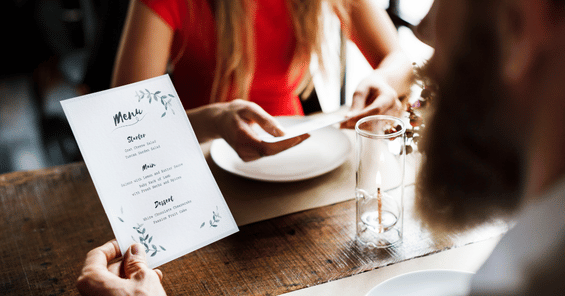

How to Scale Recipes to Save Money and Reduce Waste
In this article, learn how to scale recipes and in turn, control your restaraunt's inventory and food waste.
You've introduced a new lunchtime soup, but you didn't anticipate how popular it would be. Now, you need to make twice the amount to satisfy customer demand. On the flip side, you discover a stew that was once popular during lunch is lagging in sales and you need to reduce the amount you're making.
The popularity of dish on the menu is always ebbing and flowing, leaving restaurants to figure out how much of any recipe is just the right amount to make. Too little and you risk losing customers who don't get their orders. Too much and food is wasted.
That's why it's important to know how to scale recipe ingredients.
Scaling a recipe refers to either increasing or decreasing its yield. Of course, chefs need to know how to scale recipes up, but there are also instances where scaling down is just as important.
In this article, we'll discuss how to scale recipes, which recipes scale well (and which don't), and the importance of conversion factors.
The Ultimate Guide to Restaurant Success: Optimizing Operations, Maximizing Profits, and Building a Loyal Customer Base
🔓 Unlock the secrets to restaurant success with actionable strategies for optimizing operations, maximizing profits, and building a loyal customer base.

Why Should You Consider Scaling Recipes?
Of course, it's important to scale recipes when you're taking them from the test kitchen to your menu. Particularly for recipes made in large batches ahead of time, scaling up a recipe correctly will ensure the small serving size or batch your chef experimented with will taste exactly the same when made to meet the required yield for the breakfast, lunch, or dinner rush.
It's important, however, for all of your head chefs and kitchen managers to know how to scale a recipe up or down so that there is never too much or too little to meet demands.
Recipe scaling helps control inventory and food waste, as well. Your broccoli cheese soup, for example, may be a popular lunch item that's less frequently ordered at dinner. You make a larger batch for lunch and a smaller one for dinner, but how much broccoli, cream, and cheddar do you need for each recipe, and how much you should keep on hand?
Knowing the scaling factor of each of your ingredients and how to scale recipes correctly will help you keep inventory levels precise.
Which Recipes Should You Scale on Your Menu?
There are recipes that scale well and there are recipes that don't. Let's take a look at some examples.
Recipes that Scale Easily
Most recipes that don't involve baking can be scaled pretty easily. Even so, there are some ingredients that don't scale well, such as spices, seasonings, and alcohol. For those ingredients, it's best to add a little at a time while cooking, recording how much you add every time, until you get the flavor just right.
For example, a recipe for tofu stir fry is pretty easy to scale up or down. Simply divide or multiply most of the ingredients to reflect the increased yield. If you wanted to double the stir fry, you would simply double most of the ingredients. Want to make only half the number of servings? Cut the ingredients in half.
We're saying most, here, because soy sauce falls into that category of trickier ingredients. Doubling the soy sauce may make the stir fry too salty. In that case, it's best to add a little at a time, then include the new measurement in your cookbook.
Recipes That Don't Scale Easily
Recipes such as baked goods with leavening ingredients such as baking soda, baking powder, and yeast don't lend themselves to scaling as easily. You can't simply add double the amount of baking soda in your bread dough and expect it to come out well.
If you do need to scale a recipe like that, it's important to pay close attention to your conversion, or scaling, factor. Or better yet, stick to the original recipe and make more than one batch.
In some cases, the volume in the pan will play an important factor in scaling. You know, for example, that you can't simply double a cake recipe, put all the batter into one big pan, and bake it at the same oven temperature. The edges will bake, while the center won't cook at all.
The same goes for casseroles, baked pastas, and baked egg dishes. It may be better to simply bake more than one batch for those kinds of dishes, as well, using more than one pan at the same time.
Steps to Scaling Recipes
To scale a recipe, you need to know the conversion factor for each ingredient. In fact, you can calculate that ahead of time and include it on your recipe cards. That way, kitchen staff can scale recipes up or down on the fly.
Conversion Factor
The conversion or scaling factor is the number that tells you just how much you need to scale your ingredients up or down. It helps determine each ingredient quantity you'll need for recipes you're scaling up to more than double the original.
Let's say you want to scale up that broccoli cheese soup, which normally serves 4, to 15. (Of course, you'd need a lot more than 15 servings for a lunch rush, but we'll use small numbers just to keep things simple.)
15 ÷ 4 = 3.75
Your conversion factor is 3.75.
Scaling Up
Once you have your conversion factor, you can scale up your recipe by multiplying the measurements of each ingredient by your conversion factor. So, if the recipe calls for 2 cups of shredded cheddar cheese:
2 x 3.75 = 7.5.
You need 7.5 cups of shredded cheddar cheese to scale up from 4 to 15 servings.
Scaling Down
To scale down, simply reverse the calculations. If you need to scale down from 15 servings to 4, you would still use the conversion factor of 3.75. But instead of multiplying the original measurements for each ingredient, you would divide them.
7.5 ÷ 3.75 = 2
Now you know you need 2 cups of shredded cheddar cheese to make a smaller portion.
As you use conversion factors, you may get some fractions that don't translate well to your ingredients, like 3.75 eggs. In that case, it's okay to round up or down without affecting the entire recipe.
Baker's Percentage
If you do scale a baking recipe, like the cake we mentioned above, it's best to convert from volume measurement to weight measurement (such as ounce, pound, or fluid ounces) using a digital kitchen scale before figuring out your conversion factor and new measurements.
In baking, the conversion factor is expressed as the baker's percentage, where each of the dry ingredients, as well as the wet ingredients, is shown as a percentage of the total weight of the flour.
For example, if your cake calls for 4 cups of flour, 2 cups of sugar, and 2 tablespoons of vanilla, instead of getting out your measuring cup and tablespoon, you would convert to weight measurements using a food scale and then calculate the percentage of each ingredient against the weight of the flour, which is always 100% in the converted recipe.
(16 oz sugar ÷ 32 oz flour) x 100 = 50% sugar
(1 fl oz vanilla ÷ 32 oz flour) x 100 = 3% vanilla
If you need a quick reference guide, sites such The Spruce include a recipe converter.
How Can Preparations and Production Events Help You Scale?
If all this sounds complicated, don't worry. If you're using a software solution such as MarketMan, there are built-in tools to help you scale your recipes.
Within MarketMan, you can build preparations; recipes for certain elements of your menu items that the kitchen staff can prepare ahead of time and at scale. Examples of preparations include pasta sauce, pesto, and house-made salad dressings.
Your BOH staff can use preparations to run production events, assigning that sauce or dressing to a member of the staff, and even printing out the exact measurements needed to scale the recipe.
Scaling a favorite recipe doesn't have to be hard. And it can help your restaurant reduce food waste and save on food costs. Simply look for a solid restaurant management tool, such as MarketMan to help you scale quickly and accurately.

Ready to cut food costs, streamline inventory management, and simplify your restaurant's back-of-house processes? MarketMan offers advanced restaurant management software that automates daily tasks, eliminates inefficiencies, and provides strategic insights for your business. Take charge of your restaurant's success with MarketMan. Book a demo now to unlock your restaurant's full potential!
Author
Contributors
If you have any questions or need help, feel free to reach out
Don't miss out on maximizing your restaurant's profits! Calculate your ROI with MarketMan
Join over 18,000 restaurants and get the hottest restaurant tips delivered to your inbox
You may also be interested in
Ready to get started?
Talk to a restaurant expert today and learn how MarketMan can help your business






